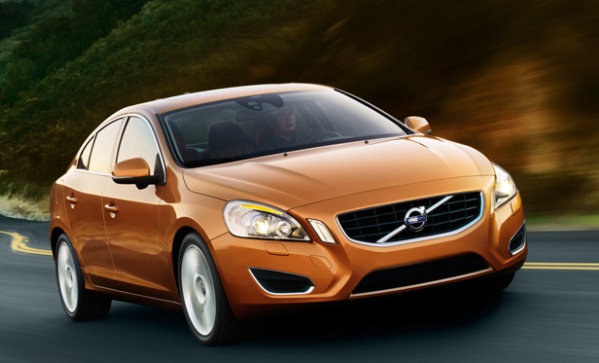The 2012 Volvo S60 T5 FWD is sexy and lean on the outside. Inside, it pampers the driver first, then all the riders, too. The electro-hydraulic, power-assisted rack-and-pinion steering is so sensitive it practically reads minds. It’s got a gutsy engine. If you like driving, you’ll like driving the 2012 Volvo S60 T5.
But here’s an interesting thought. You barely need to use the accelerator or brake, thanks to a clever new option. And the question that raises becomes: Would you want to?
The T5 is slightly less powerful than its sister, the T6, but no one here is complaining that it puts out 250 hp at 5,500 rpm and 266 pounds of torque at 1,800. With that much thrust available, you can pass the longest trucks almost instantly upon the slightest tap of the accelerator.
And you may want to keep that at a tap. Stomp, and you fly — but you know it’s going to cost you. Listing a fuel consumption of 11.7 L/100 km in the city and 7.8 on the highway, the 2012 S60 T5 is not quite your office lush at the holiday party open bar, but you will notice that lightness in your wallet after filling up.
That said: Step up, Volvo Adaptive Cruise Control!
Cruising is usually much better on fuel but this feature, as its name suggests, also adapts to the speed(s) of the car ahead of you, thus solving the frustration of other drivers suddenly slowing and accelerating. You set a (consider legal) speed and time/distance gap, then proceed. If the vehicle in front slows, so do you automatically. No desperate thumbing that minus sign, or last-minute braking. Move into an open lane, and it automatically accelerates until reaching your cruising speed — or until some other bonehead gets in your way. It doesn’t matter how long you take to find the open space to reach your preset cruising speed, this option keeps you safely behind whoever’s in front until they aren’t. Brilliant.
At first, Adaptive Cruise Control is probably far more adaptive than you. Once the car ahead slows, you’ll be tempted to manually or pedally (why isn’t that a word?) brake yourself. Same thing when you switch lanes: You’ll want to accelerate but don’t have to. It is somewhat disconcerting, but you get used to it. You…adapt. After an hour, you’ll probably like it.
Mind, the Adaptive Cruise Control feature isn’t cheap, coming with a $4,500 package that includes Volvo’s Driver Alert System, Blind Spot Information System, Park Assist and the truly disconcerting but brilliant safety feature, Pedestrian Detection with Full Auto Brake.
This brings us back to the question: Would you want it? There are some drive-ease features that make great sense, like the electric Drive Away Release parking brake, ensuring that you never again need hear that strained gunning. And while no red-blooded man admits that he needs Park Assist, it is a huge convenience when you have it.
In any case, the Volvo S60 T5 FWD is that breed of performance sedan that gives full marks for participation.
It loves curves. Anywhere. Its turning circle is an agile 11.9 metres. It’s sportily tuned, with MacPherson suspension back and front, but still a smooth ride. It feels almost like cheating when made so much easier to operate, but it’s nice to have the choice. If you spend a lot of commuter time on the highways, that bump in price will quickly pay itself off in blood pressure meds and anger management classes.
In the New Year, we’ll have a look at this vehicle’s sister, the T6 R-Design.
2012 Volvo S60 T5 FWD
S60 T5 Base MSRP: $38,300
S60 T5 Level II MSRP: $39,950
As driven: $53,155
——————–
Image courtesy of Volvo.



Where did you get those fuel consumption numbers? Not even close to what Volvo says they are.
Actually, they’re exactly what Volvo says they are – just not Volvo Canada’s website. Those numbers came from a contact at a local Volvo dealership but (NB!!) you’ll also find them at the American Volvo site, cleverly disguised as mileage: 20 in the city; 30 on the highway – which equals the above numbers translated to clicks per 100/km. Canada’s rating system is – how do we put this gingerly – fanciful? Idealistic? Ask anyone you know who’s just purchased a new car whether they’re pulling the efficiency they’d expected. It’s often around 20% off the US’s numbers.
The reason?
The US Environmental Protection Agency conducts its own tests; Canada’s government, like some new age schoolteacher, asks the auto manufacturers what they think their score should be. In an email to a CBC reporter, the Ministry of Natural Resources openly admitted, “the published fuel consumption values are achievable under ideal conditions.”
So idealistic might be the right word after all. Learn more here: http://bit.ly/smHxID
Anyway, thank you for highlighting the discrepancy. Sorry it’s taken so long to
reply. I’m even less efficient than Canada’s fuel efficiency rating
system.